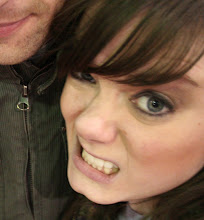The Big Bad Wolf: A Once Upon A Time Introduction.
The defamation of the character of the Wolf has occurred in every single fairy-tale that he has featured in. The Wolf is the fairy-tale symbol of everything that is dangerous and everything we should avoid. Fairy-tales and story telling are a large part of our childhood and create a foundation for the teaching of morals and ideas.
There is one story in particular in which the wolf dresses as a sheep in order to trick the shepherd, his motives are clear: he is hungry and he wants to eat the sheep – he will do whatever is necessary in order to sustain himself.
This one story and principle can be compared to contemporary consumer trends. Consumerism is essential in this society because we no longer self-produce the things necessary for our survival. So we consume to live. But there is a large consumer market filled with hundreds of products – some of them essential, some of them no so much – every product has a manufacturer and a brand and they all want to survive in the marketplace. To help the individual decide what products to consume advertising, packaging and branding were created to communicate the products contents, manufacturer and to convey its quality.
Over the years as more and more brands started to appear, it became essential for products to compete for their share of the market place. This led to surreptitious methods of communication that uses psychology to exploit the needs of the individual in order to achieve a higher status and standing in the market place.
This involved lowering prices, changing packaging, introducing new sub-brands or products under the same brand and advertising campaigns that promised happiness and fulfilment through purchasing objects – in other words, the brands and the products, did everything they could to stay afloat in a competitive market. Just like the wolf they dressed themselves in ‘clothing’ that allowed the consumer to feel comfortable enough to trust and believe in the brand. But where is the danger in that?
The danger is that these brands and products are not fulfilling their promises; they are not making us happy, they are not helping us to find romance, or to succeed in our job, or to have the perfect family, because, these things cannot be achieved by buying.
Consumerism has become a ‘vicious cycle.’ It involves ‘the chronic overwork to be able to spend more; the social disintegration resulting from overwork; the environmental damage caused by consumer waste; conflict over resources to supply consumer demand. In other words, a myriad of problems loosely bound by the innocent desire for an iPod or a luxury car collection’ (Uechi, 2007, p.51).
It is necessary to consume, but over-consumption is damaging our mental and natural environment and clouding our perspective and priorities in life. I don’t want to preach, and I don’t want to tell anyone how to live their life, I just want to bring these issues to the forefront. With the rise in fear of global warming, a focus has been made on the amount we consume and the exploited countries and people that are affected by our over-consumption habits.
So, I am crying wolf, in the hope that someone will listen and realise that just because the wolf is in a disguise, of either sheep’s clothing or Granny’s clothing, doesn’t mean he is not there.
Labels: big bad wolf, children, consumerism, contemporary society, culture, design, identity, life, little red riding hood, stories


0 Comments:
Post a Comment
Links to this post:
Create a Link
<< Home